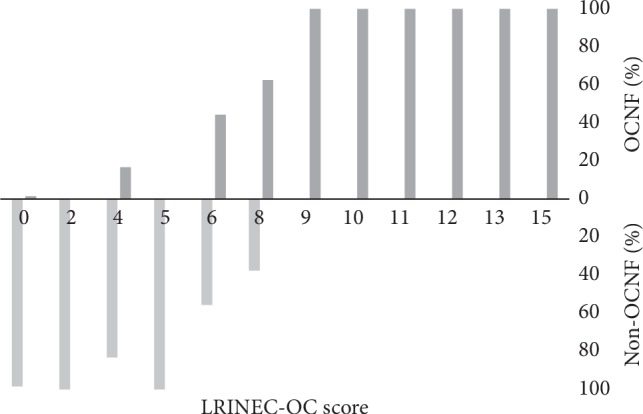Oro-cervical necrotizing fasciitis (OCNF) therapy requires early surgical debridement and opening of the wound, and due to this fact, early analysis is essential.
The Laboratory Risk Indicator for Necrotizing Fasciitis (LRINEC) rating primarily based on blood take a look at knowledge has just lately been proposed as an auxiliary diagnostic software. However, in some instances, it’s tough to diagnose OCNF.
We carried out a pooled evaluation of sufferers with OCNF at Gunma University Hospital and literature instances, with the purpose of designing a brand new auxiliary diagnostic software for OCNF by including bodily traits of the oro-cervical area to blood take a look at knowledge in the first examination.
Univariate and multivariate logistic regression was used to pick out predictors of OCNF. The LRINEC-Oro-Cervical (OC) rating was then designed utilizing correlation coefficients of objects chosen in logistic regression evaluation.
A cutoff worth for the LRINEC-OC rating was decided utilizing receiver working attribute (ROC) curve evaluation.ResultsCRP, WBC, Cr, and pores and skin flare in the cervical and precordial areas have been extracted as impartial elements (p < 0.05) and evaluated as predictors of OCNF.
The LRINEC-OC rating for the prediction of OCNF was designed utilizing the regression coefficients in logistic evaluation.
The cutoff worth for the LRINEC-OC rating was 6 factors with a sensitivity of 88.5% and a specificity of 93.4%, and the AUC was 0.909.Delays in analysis and surgical therapy for OCNF led to a deadly prognosis, and the potential utility of the LRINEC-OC rating for bettering the prognosis was proven on this research.

In Silico Laboratory: Tools for Similarity-Based Drug Discovery.
Computational strategies that predict and consider binding of ligands to receptors implicated in several pathologies have grow to be essential in trendy drug design and discovery.
Here, we describe protocols for utilizing the just lately developed bundle of computational instruments for similarity-based drug discovery. The ProBiS stand-alone program and net server enable superimposition of protein buildings in opposition to giant protein databases and predict ligands primarily based on detected binding web site similarities.
GenProBiS permits mapping of human somatic missense mutations associated to most cancers and non-synonymous single nucleotide polymorphisms and subsequent visible exploration of particular interactions in connection to those mutations.
We describe protocols for utilizing LiSiCA, a quick ligand-based digital screening software program that permits simple screening of giant databases containing billions of small molecules.
Finally, we present the use of BoBER, an internet interface that permits user-friendly entry to a big database of bioisosteric and scaffold hopping replacements.